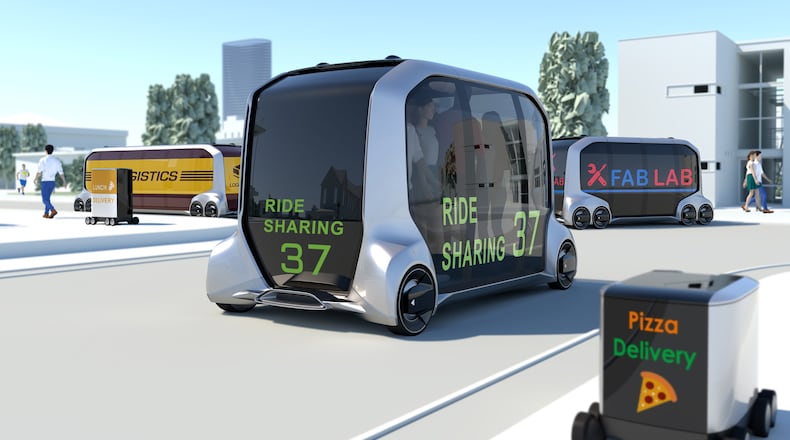TOYOTA CITY, Japan — Early last year in Las Vegas at the Consumer Electronics Show, Toyota unveiled a hard-to-define self-driving concept vehicle, alongside a slate of high-profile companies that included Amazon, Pizza Hut, Uber and Chinese ride-hailing app DiDi as partners.
It was called the e-Palette, and with it, Toyota pitched a vision of the future in which shared vehicles spend part of the time as traveling sneaker showrooms, part of the time as driverless package delivery vans and part of the time moving people.
Before that future becomes a reality, though, Toyota has to get through the Olympics.
Toyota officials said e-Palettes — which are essentially flat platforms that serve as a base for interchangeable upper bodies — will move athletes to and from the Athletes’ Village in 2020 in Tokyo. That might sound simple enough, but it’s the highest profile test yet of Toyota Motor Corporation president, Akio Toyoda’s charge to become a “mobility company.”
The automaker hopes that the 2020 Games will be a showcase for not just the e-Palette, but for the software platforms that tell vehicles where to go and when.
Asked about the biggest challenge for engineers working on such a tight deadline, Junya Kida of Toyota’s MaaS (or Mobility as a Service) business division replied with a wry smile.
“Everything,” he said.
Kida said the idea was developed over a few years based on conversations with “customers” — the alliance members.
“We’re not a service provider; they will be the service providers. So we listened carefully,” he said.
Alliance partners were able to lend Toyota expertise where the automaker has less — like Amazon’s voice recognition tech.
Kida said he had made several trips to Plano to work with Toyota Connected leaders, too. He said Toyota hopes to start commercializing the e-Palette sometime in the 2020s.
Sam Abuelsamid, a senior analyst with Navigant research, said the e-Palette is “actually a big deal” because the promising concept is both a services platform and a physical vehicle.
“Vehicles are going to require a different approach,” he said. “The traditional approach for a manufacturer has been to sell it and forget it.”
But when more vehicles are automated, they’ll require regular software updates as well as hardware maintenance.
Vehicle usage might become more subscription-based. If that’s the case, Abuelsamid said, then the vehicle, like an airplane, will have to be in operation as much as possible.
“When an airplane’s in the sky, it’s making money,” he said.
A flexible vehicle like the e-Palette gives subscribers (or owners) options to adjust how it’s used based on demand. If, for example, there’s more demand during the work day for a vehicle to deliver packages, then at rush hour there’s more demand for ride sharing, then a vehicle that can switch over easily will maximize the amount of time it can be used.
“The idea of this flexible vehicle architecture — everybody’s playing around with this,” he said, citing Swiss company Rinspeed’s Snap vehicle as an example.
Abuelsamid said if the e-Palette demonstration at the Olympics is successful, that places Toyota near the head of the pack of companies trying to crack the autonomous vehicle code.
But it’s still tough to say how things will ultimately shake out even five years later.
“When people ask who’s leading, I say it’s like asking who’s leading into the first turn of the 24 Hours of Le Mans (car race),” he said. “It’s way too early to say who’s going to win.”
———
Reporting in Japan was made possible by a fellowship with the International Center for Journalists. Junko Takahashi, a Tokyo-based interpreter for the center, contributed reporting and translation and Tomoko Ohashi, a Nagoya-based interpreter with Inter Group Corp., contributed translation to this story.
About the Author
Keep Reading
The Latest
Featured

